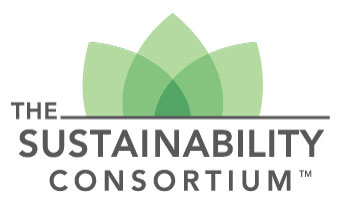Adapt-N. “Section Features.” Accessed September 21, 2020. http://www.adapt-n.com/#section-features
Agriculture and Agri-Food Canada. “Holos software program.” Accessed September 09, 2020. https://www.agr.gc.ca/eng/scientific-collaboration-and-research-in-agriculture/agricultural-research-results/holos-software-program/?id=1349181297838
Aquaculture Stewardship Council. “About the ASC.” Accessed September 28, 2020. https://www.asc-aqua.org/what-we-do/about-us/about-the-asc/
Aquaculture Stewardship Council. “Feed.” Accessed September 28, 2020. https://www.asc-aqua.org/what-we-do/our-standards/new-standards-and-reviews/new-farm-standards/new-feed/
American Feed Industry Association. “About AFIA.” Accessed September 15, 2020. https://www.afia.org/about-afia/mission-vision-values/
Asem-Hiablie, Senorpe, et al. “A life cycle assessment of the environmental impacts of a beef system in the USA.” The International Journal of Life Cycle Assessment 24.3 (2019): 441-455.
BASF. “AgBalance™ Livestock.” Accessed September 22, 2020. https://www.basf.com/global/en/products/nutrition/animal-nutrition/AgBalance-Livestock.html
BASF. “U.S. Beef – Eco-efficiency Analysis.” NSF. https://www.beefresearch.org/CMDocs/BeefResearch/Sustainability%20Completed%20Project%20Summaries/BASF_NCBA%20US%20Beef%20Industry%20Phase2_%20NSF%20EEA%20Analysis%20Report_FINAL.pdf
Bunge. “About Centerfield.” Accessed September 22, 2020. https://www.bungecenterfield.com/Home/AboutCenterfield/tabid/197/Default.aspx
Bunge. “Welcome to Centerfield.” Accessed September 22, 2020. https://www.bungecenterfield.com/
Cargill. “Cargill Nutrition System: A world of insights brought right to your door.” Accessed September 22, 2020. https://www.cargill.com/animal-nutrition/innovation/cargill-nutrition-system
Cargill. “Cargill aims to BeefUp Sustainability.” Accessed September 09, 2020. https://www.cargill.com/story/cargill-aims-to-beefup-sustainability
Cargill. “Sustainable Beef.” Accessed September 08, 2020. https://www.cargill.com/sustainability/sustainable-beef
Cattau, Megan E., Miriam E. Marlier, and Ruth DeFries. “Effectiveness of Roundtable on Sustainable Palm Oil (RSPO) for reducing fires on oil palm concessions in Indonesia from 2012 to 2015.” Environmental Research Letters 11.10 (2016): 105007.
COMET Farm. “What is COMET Farm.” Accessed September 08, 2020. http://comet-farm.com/
Cool Farm Alliance. “The Cool Farm Tool.” Accessed September 08, 2020. https://coolfarmtool.org/coolfarmtool/
Cool Farm Alliance. “Frequently Asked Questions.” Accessed September 08, 2020. https://coolfarmtool.org/coolfarmtool/frequently-asked-questions/
Cool Farm Alliance. “The Cool Farm Tool.” Accessed September 22, 2020. https://coolfarmtool.org/coolfarmtool/
Datu Research. Shared Value: How Smithfield Foods creates environmental and business benefits through supply chain partnerships (February 23, 2019). https://www.edf.org/sites/default/files/content/smithfield-case-study.pdf
Drovers. “Project Supports Nebraska Regenerative Agriculture.” Accessed October 26, 2020. https://www.drovers.com/article/project-supports-nebraska-regenerative-agriculture
Ecosystem Services Market Consortium. “Pilot Projects.” Accessed October 26, 2020. https://ecosystemservicesmarket.org/pilot-projects/
Environmental Defense Fund. “$1 million USDA award expands public-private partnerships for ag sustainability.” Accessed October 27, 2020. http://blogs.edf.org/growingreturns/2018/02/14/usda-rcpp-north-carolina-iowa/
Environmental Defense Fund, and K·Coe Isom. Poultry Sustainability Guide. https://614id4802rj1n5bzhugm3ddx-wpengine.netdna-ssl.com/wp-content/uploads/2019/07/EDFBiz-Poultry-Sustainability-Report_FINAL.pdf
European Commission. “The Environmental Footprint Pilots.” Accessed October 20, 2020. https://ec.europa.eu/environment/eussd/smgp/ef_pilots.htm#pef
FAIRR. “Global Investor Engagement on Meat Sourcing: Progress Briefing.” Accessed September 22, 2020. https://www.fairr.org/article/global-investor-engagement-on-meat-sourcing/
Farm Progress. “New oat, wheat markets debut in Iowa.” Accessed October 27, 2020. https://www.farmprogress.com/
FEFAC. Soy Sourcing Guidelines (June 2016). https://fefac.eu/wp-content/uploads/2020/07/fefac_soy_sourcing_guidelines_en-1.pdf
FEFAC. “Sustainability.” Accessed September 15, 2020. https://fefac.eu/priorities/sustainability/
FEFAC. “The PEFCR Feed for Food-Producing Animals.” FEFAC. Accessed September 15, 2020. https://fefac.eu/priorities/sustainability/pefcr-feed/
Field to Market. “Fieldprint Platform.” Accessed September 09, 2020. https://fieldtomarket.org/our-programs/leading-with-science/fieldprint-platform/
Food and Agriculture Organization of the United Nations. Environmental performance of animal feeds supply chains: Guidelines for assessment. Rome: FAO, 2016. http://www.fao.org/3/a-i6433e.pdf
Food and Agriculture Organization of the United Nations. Feed Safety Multi-Stakeholder Partnership. Rome: FAO, 2016. http://www.fao.org/3/a-br874e.pdf
Food and Agriculture Organization of the United Nations. “Global Livestock Environmental Assessment Model (GLEAM).” Accessed September 08, 2020. http://www.fao.org/gleam/en/
Food and Agriculture Organization of the United Nations. “Livestock and the environment.” Accessed September 15, 2020. http://www.fao.org/livestock-environment/en/
Food and Agriculture Organization of the United Nations. Transforming the livestock sector through the Sustainable Development Goals. Rome: FAO, 2018. http://www.fao.org/3/CA1201EN/ca1201en.pdf
Forum for the Future. “Reinventing the way the world works.” Forum for the Future. Accessed September 21, 2020. https://www.forumforthefuture.org/reinventing-the-way-the-world-works
Forum for the Future. The feed behind our food: Time to act on feed (2018). http://www.igfa.ie/resources/FeedBehindOurFood.pdf
Forum for the Future. The Future of Food (2019). https://www.forumforthefuture.org/Handlers/Download.ashx?IDMF=f2a9339c-8a62-4462-a886-f7de0e3fd729
Forum for the Future. “1/3: Why pay attention to Animal Feed.” Accessed September 21, 2020. https://www.forumforthefuture.org/blog/why-pay-attention-to-animal-feed
Forum for the Future. “Feed Compass: acting on animal feed.” Accessed September 22, 2020. https://www.forumforthefuture.org/feed-compass
Global Agenda for Sustainable Livestock. ACTION NETWORK 1 – Closing the Efficiency Gap. http://www.livestockdialogue.org/fileadmin/templates/res_livestock/docs/Area_1/Closing_the_Efficiency_gaps.pdf
Global Agenda for Sustainable Livestock. Progress Report (GASL, 2019), http://www.livestockdialogue.org/fileadmin/templates/res_livestock/docs/Progress_Report/REPORT_GASL_2020.pdf
Global Food Safety Initiative and The Consumer Goods Forum. GFSI Guidance Document. https://www.mccain.com/media/1407/gfsi-guidance-document.pdf
Global Feed LCA Institute. “About the GFLI.” Accessed September 22, 2020. http://globalfeedlca.org/about-gfli/about-the-gfli/
Global Roundtable for Sustainable Beef. “Home.” Accessed October 26, 2020. https://www.grsbeef.org/
Global Roundtable for Sustainable Beef. “Members.” Accessed October 26, 2020. https://www.grsbeef.org/page-1861857
Global Science & Technology. Success Stories on User Engagement (September 30, 2015). https://www.ncdc.noaa.gov/sites/default/files/attachments/NCEI-Success-Stories-on-User-Engagement-Case-Study-1-Adapt-N.pdf
IFEEDER. “IFEEDER Seeks Contractor to Develop Feed Industry’s Sustainability Road Map.” Accessed September 23, 2020. https://ifeeder.org/ifeeder-seeks-contractor-to-develop-feed-industrys-sustainability-road-map/
IFEEDER. “The Institute.” Accessed September 23, 2020. https://ifeeder.org/the-institute/
Innovation Center for U.S. Dairy. “Animal Care.” Accessed September 15, 2020. https://www.usdairy.com/sustainability/animal-care
Innovation Center for U.S. Dairy. “Environmental Sustainability.” Accessed September 15, 2020. https://www.usdairy.com/sustainability/environmental-sustainability
Innovation Center for U.S. Dairy. “The U.S. Dairy Stewardship Commitment.” Accessed September 15, 2020. http://commitment.usdairy.com/
International Feed Industry Federation. “About IFIF.” Accessed September 14, 2020. https://ifif.org/about/ifif/
International Feed Industry Federation. “Global Agenda for Sustainable Livestock.” Accessed September 14, 2020. https://ifif.org/our-work/project/global-agenda-for-sustainable-livestock/
International Feed Industry Federation. “Global Feed LCA Institute (GFLI).” Accessed September 14, 2020. https://ifif.org/our-work/project/global-feed-lca-institute-gfli/
International Feed Industry Federation. “Partnership on Livestock Environmental Assessment and Performance (LEAP).” Accessed September 14, 2020. https://ifif.org/our-work/project/partnership-on-livestock-environmental-assessment-and-performance-leap/
International Feed Industry Federation. “Specialty Feed Ingredients Sustainability Project (SFIS).” Accessed September 14, 2020. https://ifif.org/our-work/project/the-speciality-feed-ingredients-sustainability-project-sfis/
JBS. “Beef.” Accessed September 08, 2020. https://jbssa.com/our-business/beef/
Kroebel, Roland, Henry Janzen, and Karen A. Beauchemin. “Canadian Whole-Farm Model Holos-Development, Stakeholder Involvement, and Model Application.” AGUFM 2017 (2017): GC33I-08.
Livestock Environmental Assessment and Performance (LEAP). “The Partnership.” Accessed September 14, 2020. http://www.fao.org/partnerships/leap/overview/the-partnership/en/
McDonald’s Flagship Farmers Program. “About the program.” Accessed October 23, 2020. https://www.flagshipfarmers.com/en/about-the-program/
McDonald’s Newsroom. “World Wildlife Fund Joins the Walmart Foundation, Cargill, McDonald’s to Launch Million-Acre Grazing Initiative to Help Restore Grasslands, Address Climate Change.” Accessed October 26, 2020. https://news.mcdonalds.com/news-releases/news-release-details/world-wildlife-fund-joins-walmart-foundation-cargill-mcdonalds/
Monteiro, Alessandra Nardina Trícia Rigo, and Jean-Yves Dourmad. “Life cycle assessment of feed ingredients.” SUMINAPP – Sustainable Usage of trace Minerals for Animal Production Programs (2018). DOI: 10.13140/RG.2.2.26695.75682
National Milk Producers Federation. “U.S. Dairy Innovation Center sets 2050 Goals.” Regulatory Register 22, no. 2 (Summer 2020). https://www.nmpf.org/wp-content/uploads/2020/07/FINAL-Regulatory-Register-Summer-2020.pdf
PEFCR. PEFCR Feed for food producing animals (April 2018). https://ec.europa.eu/environment/eussd/smgp/pdf/PEFCR_feed.pdf
Pork Checkoff. “Environmental Impact of Pig Farming.” Accessed September 02, 2020. https://www.pork.org/environment/environmental-impact-pig-farming/
Practical Farmers of Iowa. “About.” Accessed October 26, 2020. https://practicalfarmers.org/about/
Practical Farmers of Iowa. Small Grains for Pigs 2020. https://practicalfarmers.org/wp-content/uploads/2019/10/PFI2019_Smithfield-Program_Flyer.pdf
Round Table on Responsible Soy. “About RTRS.” Accessed October 26, 2020. https://responsiblesoy.org/sobre-la-rtrs?lang=en#que-es
Round Table on Responsible Soy. “Members.” Accessed October 26, 2020. https://responsiblesoy.org/miembros?lang=en
Roundtable for Sustainable Palm Oil. “Search For Members.” Accessed October 26, 2020. https://rspo.org/members/all
Smithfield. 2019 Sustainability Impact Report. https://www.smithfieldfoods.com/pdf/sustainability/SMITHFIELD_CSR_Report.pdf
Stewardship Index for Specialty Crops. “Welcome to the Stewardship Index for Specialty Crops.” Accessed September 03, 2020. https://www.stewardshipindex.org/
Sustainable Food Lab. “Our Approach.” Accessed October 23, 2020. https://sustainablefoodlab.org/the-food-lab/about/
Sustainable Food Lab. “Small Grains in the Corn Belt Making Diverse Rotations Work.” Accessed September 15, 2020. https://sustainablefoodlab.org/initiatives/oats-in-the-cornbelt/
Sustainable Food Lab. “Small Grains in the Corn Belt: Supply Chain Partner Newsletter.” Issue 9 (Summer 2020). https://us2.campaign-archive.com/?u=a4585b9dcc47387661ebb18cb&id=f972d2638e
The Consumer Goods Forum. “CGF Forest Positive Coalition of Action.” Accessed October 12, 2020. https://www.theconsumergoodsforum.com/wp-content/uploads/202009-CGF-Forest-Positive-Palm-Oil-Roadmap-v1.pdf
The Sustainable Agriculture Initiative (SAI) Platform. “Our Value.” Accessed September 03, 2020. https://saiplatform.org/our-value/what-we-do/#Working_Groups_and_Committees
The Sustainability Consortium. “THESIS, The Sustainability Insight System.” Accessed September 09, 2020. https://www.sustainabilityconsortium.org/what-we-offer/thesis/
Truterra. “Truterra Insights.” Accessed September 03, 2020. https://www.truterrainsights.com/
Tyson. 2019 Sustainability Report. https://www.tysonsustainability.com/downloads/Tyson_2019_Sustainability_Report.pdf
Urdiales, María Pérez, Alfons Oude Lansink, and Alan Wall. “Eco-efficiency among dairy farmers: the importance of socio-economic characteristics and farmer attitudes.” Environmental and Resource Economics 64.4 (2016): 559-574.
USDA Agricultural Research Service. “Integrated Farm System Model.” Accessed September 09, 2020. https://www.ars.usda.gov/northeast-area/up-pa/pswmru/docs/integrated-farm-system-model/
USDA Natural Resources Conservation Service. “Resource Stewardship.” Accessed September 02, 2020, https://www.nrcs.usda.gov/wps/portal/nrcs/detail/national/technical/cp/?cid=nrcseprd429509
U.S. Roundtable for Sustainable Beef. “About.” Accessed September 14, 2020. https://www.usrsb.org/about
U.S. Roundtable for Sustainable Beef. Annual Report 2018. https://www.usrsb.org/Media/USRSB/Docs/2018_annual_report.pdf
U.S. Roundtable for Sustainable Beef. Current Members. Accessed October 26, 2020. https://www.usrsb.org/membership
U.S. Roundtable for Sustainable Poultry & Eggs. “Home.” Accessed October 20, 2020. https://www.us-rspe.org/
Wageningen University. “FeedPrint NL.” Accessed September 09, 2020. http://webapplicaties.wur.nl/software/feedprintNL/index.asp
Walmart. Walmart sets goal to become a regenerative company. https://corporate.walmart.com/media-library/document/walmart-sets-goal-to-become-a-regenerative-company/_proxyDocument?id=00000174-ae08-dcf3-a7fc-afdcca070000
Walmart. “Grazing Toward a Sustainable Beef Supply Chain.” Accessed October 12, 2020. https://corporate.walmart.com/newsroom/2020/08/07/grazing-toward-a-sustainable-beef-supply-chain
Walmart Sustainability Hub. “Supplier Recognition.” Accessed September 18, 2020. https://www.walmartsustainabilityhub.com/supplier-recognition
World Health Organization. “Global and regional food consumption patterns and trends.” Accessed October 27, 2020. https://www.who.int/nutrition/topics/3_foodconsumption/en/index4.html




















































